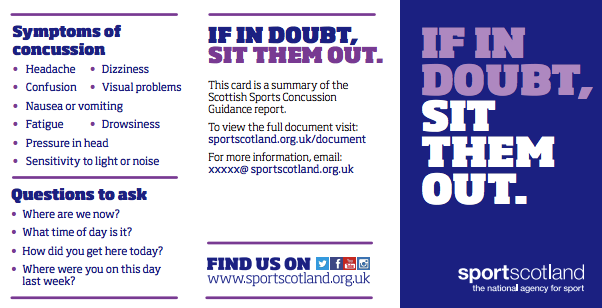BJSM Undergraduate Perspective of SEM Blog Series – FIFA World Cup 2018 Discussion
By Jeff Cullen @jeffcullen0
The main medical issue at the World Cup 2018 in Russia thus far has, not surprisingly due to the media coverage, been the management of concussion. The 2017 Concussion in Sport Group (CISG) consensus statement1 describes Sport Related Concussion as a traumatic brain injury induced by biomechanical forces with several common features.
The rather bewildering treatment given to Moroccan player Noureddine Amrabat pitch side following his concussion in the match against Iran, and the decision allowing him to play 5 days later against Portugal requires some scrutiny. His concussion was very evident to those watching: loss of consciousness, tonic posturing, and clear ataxia. It seems inconceivable that he would be fit to play in a further game only 5 days after this, if following proper concussion GRTP protocols. His wearing of a ‘scrumcap’ in his return to play is also questionable, as there is no convincing evidence that soft headwear will protect against concussion.2 The Moroccan Manager Herve Renard described him as a “warrior”.
There has been much outrage regarding these decisions, including an angry response from FifPro the player’s union, but rather than direct purely criticism towards the Moroccan FA and their medical team, perhaps it would be more beneficial if this case could result in ensuring greater education for medics and possible changes to FIFA regulations.
The main issues arising from the Amrabat case (and many other cases of concussion in professional football) I believe are:
- Consider using video footage as is already used in Rugby Union and other sports. In an example of good medical practice the FA have already employed an additional doctor, Jonathon Hanson, to accompany team doctor Rob Chakraverty at the World Cup to review video footage of potential concussions. Should this be further developed to allow proper medical assessment of players? This could an ‘HIA’ type assessment with 10 minute substitution similar to that used in elite rugby. Admittedly, the HIA, although a very useful tool, is not perfect3 but at least some kind of assessment is surely better a time pressured on field assessment. Having just introduced VAR however, FIFA may not wish to consider such fundamental rule changes at this stage.
- Medical training and education. The ‘treatment’ handed out to Amrabat was concerning. One would think that medical personnel involved in elite sport at this level should have a minimum level of skill, education and expertise. Perhaps this should include as a basic minimum an additional Sports Medicine qualification and Emergency Pitch side Trauma qualification, or at the very least to have completed FIFA’s own Football Medicine Diploma course.4World Rugby also have an excellent concussion module for professionals with video examples of concussion signs and symptoms.5
- Concussion protocols. Should some responsibility lie with FIFA to ensure correct GRTP protocols be maintained at the World Cup and other tournaments, to ensure player safety? FIFA responded to the case by saying that “while the assessment and case management of concussion incidents falls under the sole responsibility of the responsible team doctors, FIFA will address this matter with the Moroccan FA…”.
We need to ensure that all medical teams working in professional football (and all sports for that matter) are using evidence based medicine and are aware of the significance of concussion, and with it’s recognition and subsequent management. Only then will we ensure player welfare is taken seriously.

***
Jeff Cullen is a GP and Sports Doctor based in Selkirk, Scottish Borders. He is Team Doctor for the U16 and U17 Scotland teams with the Scottish Rugby Union, and is also club doctor for local amateur rugby team Selkirk RFC. He is also a medical contractor for the Scottish Football Association.
References
- McCrory P, Meeuwisse W, Dvorak J, et al Consensus statement on concussion in sport – the 5thInternational conference on concussion in sport held in Berlin, October 2016 Br J Sports Med 2017;51:838-847
- Emery CA, Black AM, Kolstad A, et al. What strategies can be used to effectively reduce the risk of concussion in sport? A systematic review. Br J Sports Med 2017;51:978-984
- Fuller CW, Fuller GW, Kemp SPT et al Evaluation of World Rugby’s concussion management process: results from the Rugby World Cup 2015. Br J Sports Med 2017;51:64-69
- FIFA Diploma in football medicine. https://www.fifamedicinediploma.com
- World Rugby concussion for match day medical staff. Playerwelfare.worldrugby.org/concussion .